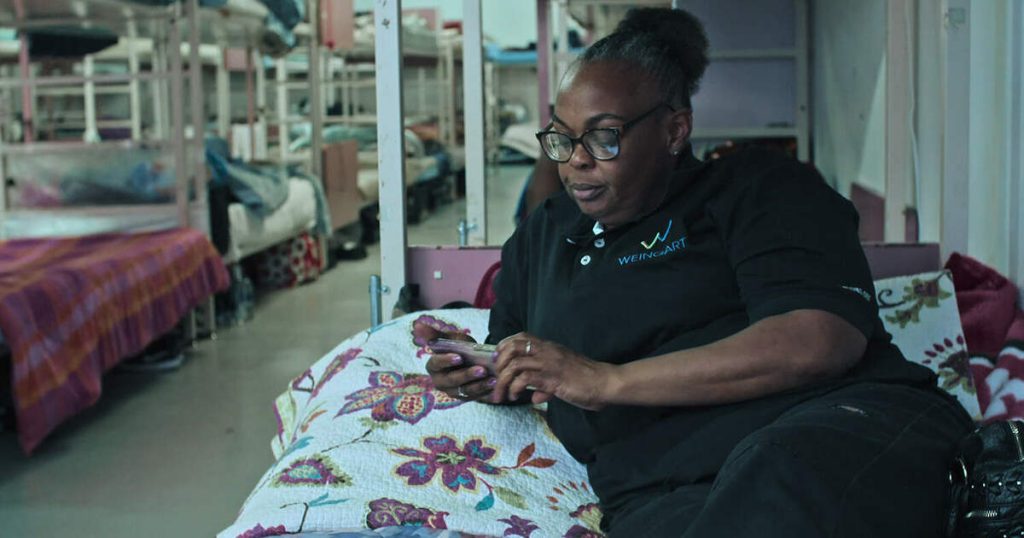The production of Where I Live, which depicts the challenges homeless people face in Los Angeles, is available on Netflix. Short film directed by Brazilian Pedro Cos
One night a year, Hollywood gets all the Oscars glamour, but the Walk of Fame is where the homeless sleep every day.
These starkly contrasted worlds will meet next month thanks to the directors of an award-nominated documentary on the homeless crisis wanting to invite their characters to the red carpet.
“I hope that on the day of the concert we can show a little of this coexistence and raise awareness about this humanity that exists, literally across the street, that we have ignored for so long,” said Brazilian Pedro Cos, one of the participants. – Director of the short film Where Do I Live?
“Hopefully we can take two or three of them with us,” his American co-director, John Schenk, added in an interview with AFP.
The documentary, available on Netflix, follows for three years many homeless and vulnerable people in Los Angeles, San Francisco and Seattle.
It intimately shows their routines and difficulties on the streets, as well as their hopes of getting out of them.
Among the attendants are Luis Rivera Miranda, a middle-aged man who has a dog and begins an affair with a homeless woman; And Ronnie Willis, “Esther of the Future”, who dances on Hollywood Boulevard in front of tourists as her livelihood.
“He has an extraordinary history: Someone with a classical dance background danced with Janet Jackson, designed Sisqo’s “Thong Song,” and “has had a very hard time, unfortunately, for a variety of reasons,” Coss explained.
Dehumanization
According to the filmmakers, part of the problem is that many people see people living on the streets in inhumane ways and become convinced that they are responsible for their tragedy.
Addressing the reasons that brought them to the streets, the film lists several factors, such as disabilities, their families’ rejection of being trans, and depression.
“We hope that the documentary will provide a new perspective that gives a face to what is happening,” Schenk continued. They are Americans, our neighbors, they have rights, and they are human beings.”
The directors adopted their characters and gained their trust by working with homeless support organizations.
Instead of interviewing them directly, Schenk put his camera in the shelters where the homeless participated in “vulnerability analysis” interviews, and left the room to allow them to discuss their situation more freely.
Schenk and Kos do not propose a solution to this problem, it is up to the municipal authorities, but they believe that the massive bureaucratic simplification of social programs available to the homeless could be a start.
The documentary notes that the no-eviction policy adopted during the COVID-19 pandemic will soon end, which could exacerbate the crisis.
“We have no doubt that we are experiencing a massive humanitarian crisis in the United States,” Schenk said.

“Prone to fits of apathy. Problem solver. Twitter buff. Wannabe music advocate.”







More Stories
71-Year-Old American Woman to Compete in Miss Texas USA Pageant – Entertainment
Milton Nascimento records an intimate performance with Esperanza Spalding.
Netflix Ends Ad-Free Basic Plan in the US – Entertainment